I spent forty-one minutes observing and photographing this Peregrine Falcon yesterday while it rested, preened and stretched right next to the Great Salt Lake.
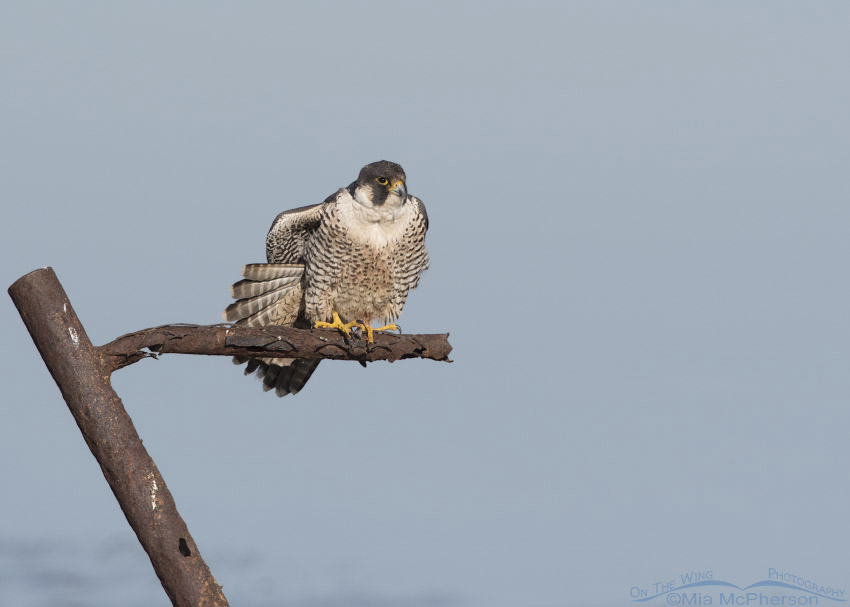 Peregrine Falcon wing and tail stretch – Nikon D500, f7.1, 1/2000, ISO 250, +0.3 EV, Nikkor 500mm VR with 1.4x TC, natural light, not baited
Peregrine Falcon wing and tail stretch – Nikon D500, f7.1, 1/2000, ISO 250, +0.3 EV, Nikkor 500mm VR with 1.4x TC, natural light, not baited
I was in a vehicle pulled close to the side of the road using it as a mobile blind and the falcon appeared to be very relaxed during the entire forty-one minutes.
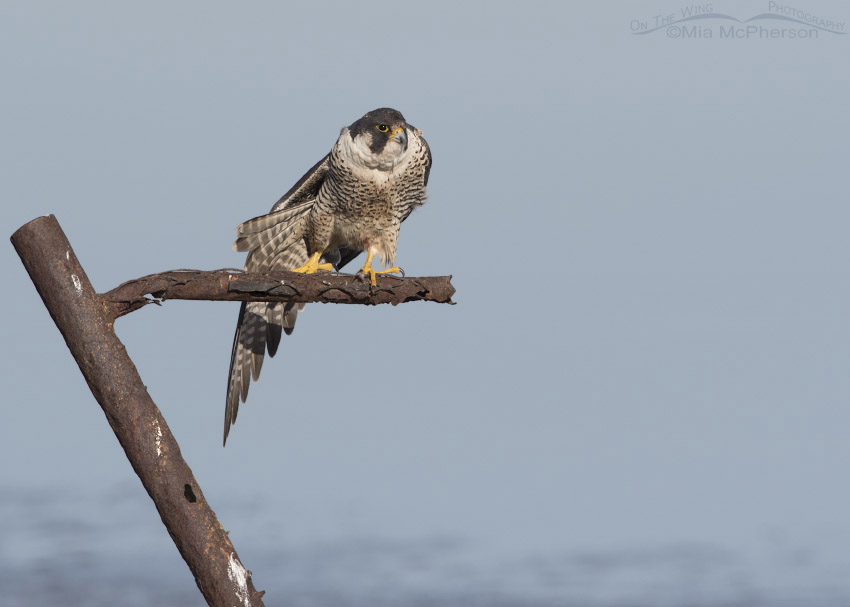 Peregrine Falcon stretching its wing and tail – Nikon D500, f7.1, 1/2000, ISO 250, +0.3 EV, Nikkor 500mm VR with 1.4x TC, natural light, not baited
Peregrine Falcon stretching its wing and tail – Nikon D500, f7.1, 1/2000, ISO 250, +0.3 EV, Nikkor 500mm VR with 1.4x TC, natural light, not baited
Most of the time while I photographed this falcon it was resting with one foot drawn up under its feathers while it looked around, it even closed its eyes a few times. There were three times that the falcon stretched its wings which gave me these nice poses to share.
The background in these images is the frozen Great Salt Lake.
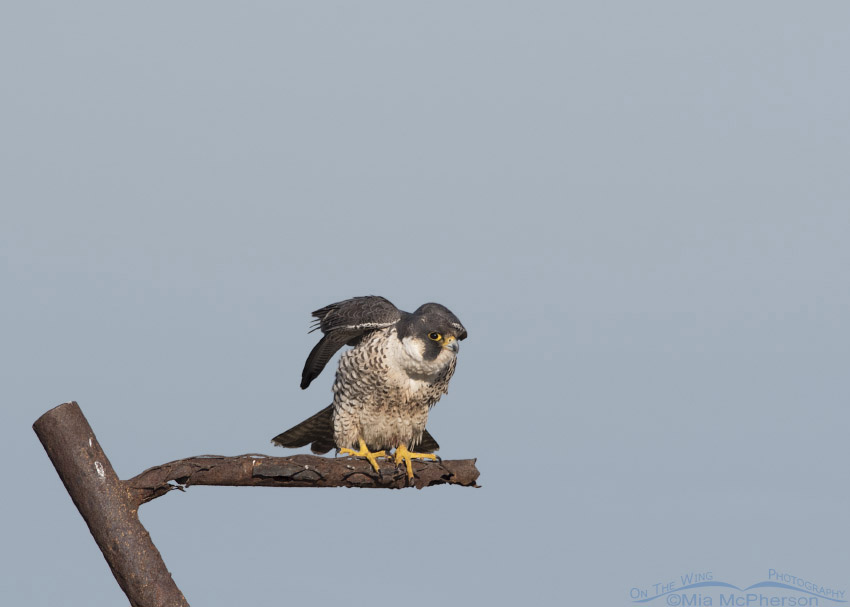 Peregrine Falcon wing stretch – Nikon D500, f7.1, 1/2000, ISO 250, +0.3 EV, Nikkor 500mm VR with 1.4x TC, natural light, not baited
Peregrine Falcon wing stretch – Nikon D500, f7.1, 1/2000, ISO 250, +0.3 EV, Nikkor 500mm VR with 1.4x TC, natural light, not baited
The falcon gave me a few wing lifts to photograph too. I am glad it looked in my direction a couple of times while it stretched…
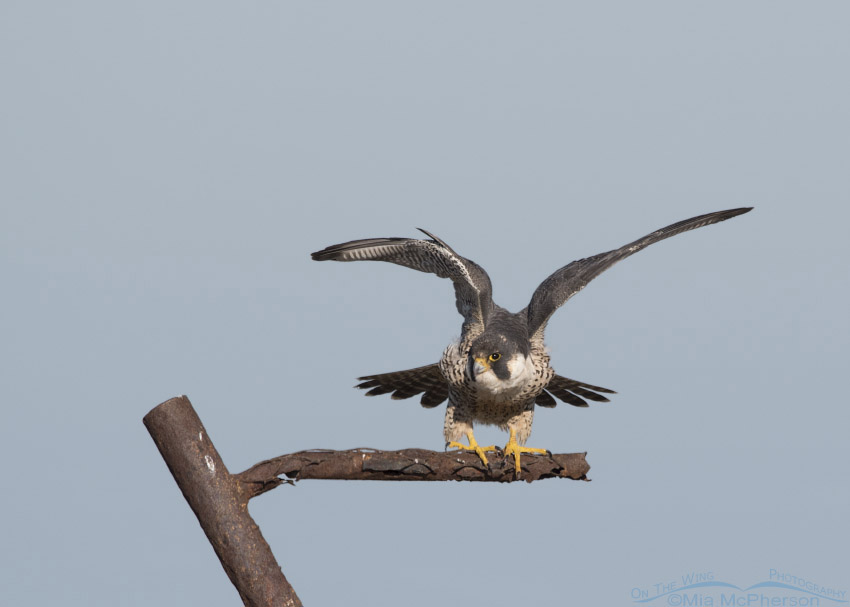 Peregrine Falcon stretching its wings – Nikon D500, f7.1, 1/2000, ISO 250, +0.3 EV, Nikkor 500mm VR with 1.4x TC, natural light, not baited
Peregrine Falcon stretching its wings – Nikon D500, f7.1, 1/2000, ISO 250, +0.3 EV, Nikkor 500mm VR with 1.4x TC, natural light, not baited
Lifted its wings over its body and fanned out its tail. This is such a beautiful bird! Those feet look huge.
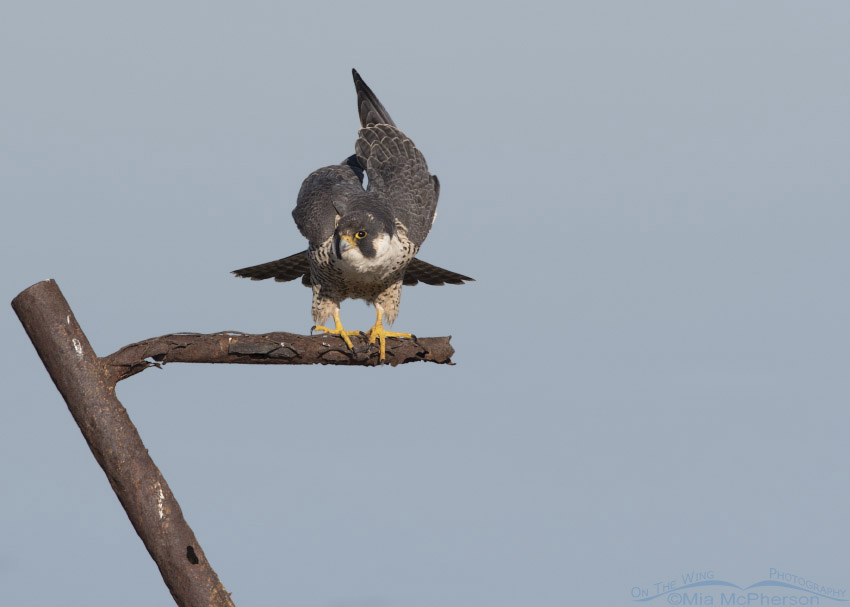 Peregrine Falcon settling its wings from stretching – Nikon D500, f7.1, 1/2000, ISO 250, +0.3 EV, Nikkor 500mm VR with 1.4x TC, natural light, not baited
Peregrine Falcon settling its wings from stretching – Nikon D500, f7.1, 1/2000, ISO 250, +0.3 EV, Nikkor 500mm VR with 1.4x TC, natural light, not baited
When the Peregrine Falcon did take off from its perch it flew east over the frozen lake and mudflats after some ducks that had flown past and within less than a minute I watched as it captured one of the ducks while in flight and flew with it way out on the flats to eat its prey.
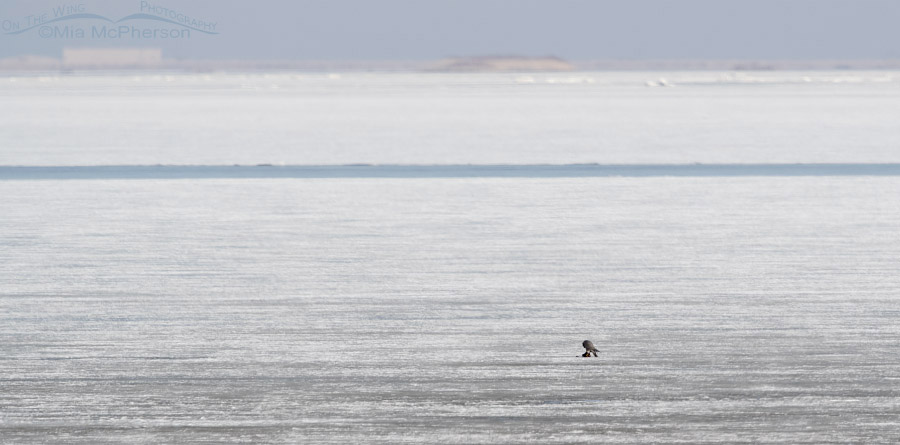 Peregrine Falcon out on the frozen flats eating its prey – Nikon D500, f7.1, 1/1250, ISO 250, +1.0 EV, Nikkor 500mm VR with 1.4x TC, natural light, not baited
Peregrine Falcon out on the frozen flats eating its prey – Nikon D500, f7.1, 1/1250, ISO 250, +1.0 EV, Nikkor 500mm VR with 1.4x TC, natural light, not baited
This is a very large crop of the falcon out on the flats with its prey, with naked eyes it was barely visible from the road and most people wouldn’t have seen it.
Watching and photographing the Peregrine Falcon yesterday was a nice way to relax, enjoy the sunshine and reconnect with nature.
Life is good.
Mia
Click here to see more of my Peregrine Falcon photos plus facts and information about this species.


Great images, sometimes we get very lucky with our subjects.
What a wonderful series…that bird sure performed for you…some very athletic- looking manuvers…a great opportunity…looks like you’re getting that good weather as predicted….
Great to see you getting shots. Not too many years ago they were 15 birds ? Away from extinction.
Enjoyable series and weather. “For much of the 20th century, peregrine falcons were at risk of being extirpated (locally extinct) in the U.S. and Canada. Falcons were dying off and breeding pairs were unsuccessful. The cause of the peregrine falcon disappearance was pesticides, specifically DDT. In the middle of the century, DDT was sprayed on farmland and the chemical made its way into the food chain. Peregrine falcons are top predators and thus absorbed large amounts of DDT from their prey like fish and other birds.” (nwf.org)